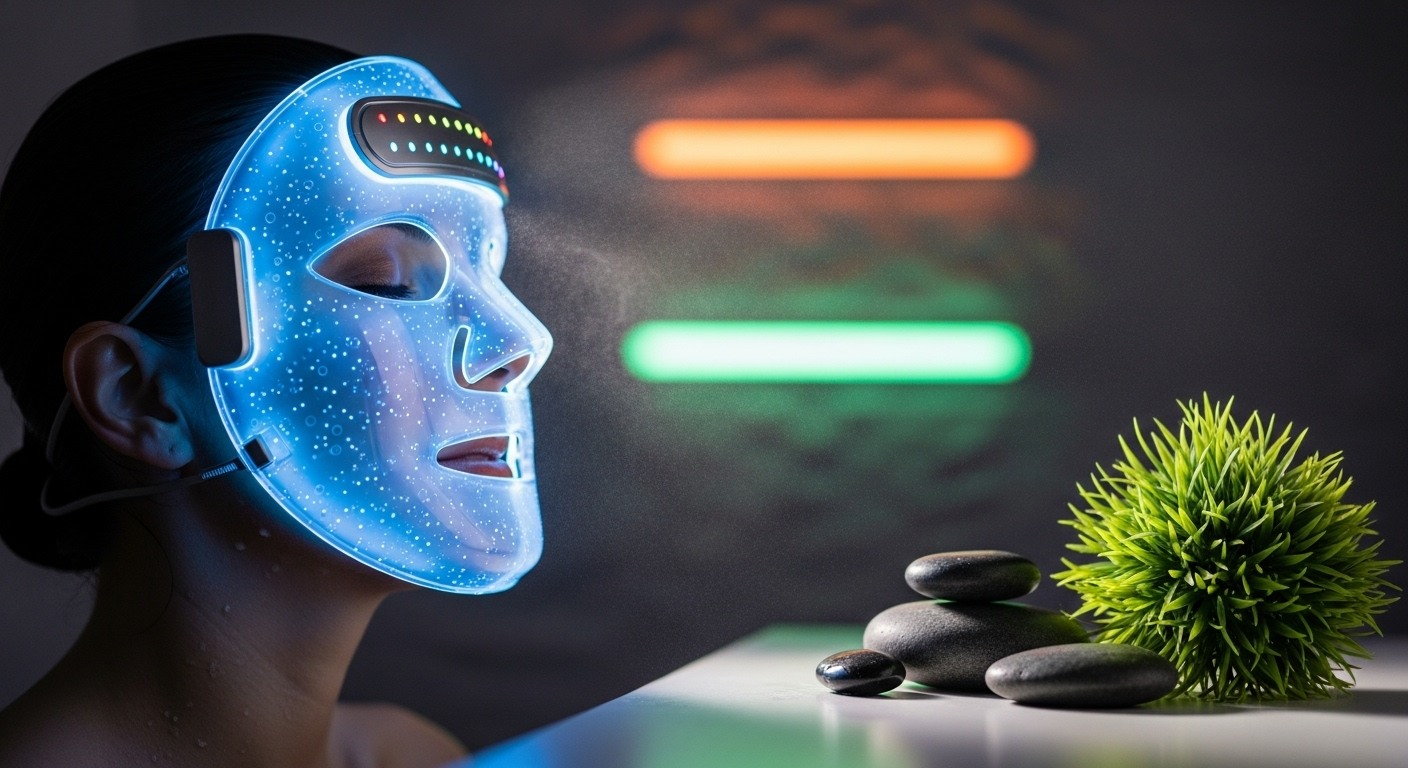Chromotherapy: The Science of Color Healing in Beauty and Wellness
In the ever-evolving world of beauty and wellness, an ancient practice is making a vibrant comeback. Chromotherapy, also known as color therapy, is gaining renewed attention for its potential to enhance both physical appearance and overall well-being. This fascinating approach harnesses the power of specific light wavelengths to stimulate healing responses in the body and mind. As the beauty industry increasingly embraces holistic methods, chromotherapy is emerging as a cutting-edge tool for skincare professionals and wellness enthusiasts alike. From its roots in ancient civilizations to its modern applications in high-tech spa treatments, chromotherapy offers a colorful new dimension to our understanding of health and beauty.

In modern chromotherapy, practitioners use specific colors to target different health concerns:
- Red: Stimulates circulation and energy
- Blue: Calms and soothes, potentially reducing inflammation
- Green: Balances and promotes healing
- Yellow: Supports mental clarity and digestion
- Purple: Associated with relaxation and spiritual awareness
While some of these associations may seem intuitive, the scientific basis for chromotherapy is still being explored and debated in the medical community.
From Ancient Wisdom to Modern Science
The journey of chromotherapy from ancient practice to modern application is a testament to the enduring human fascination with color and light. In the late 19th and early 20th centuries, scientists like Niels Finsen began investigating the therapeutic potential of light, leading to the development of phototherapy for conditions like lupus vulgaris.
Today, researchers are exploring the effects of different light wavelengths on cellular function, circadian rhythms, and various skin conditions. While not all claims of chromotherapy are scientifically validated, there is growing evidence for the biological impacts of light exposure. For instance, blue light therapy has shown promise in treating acne, while red light therapy may help stimulate collagen production.
The Beauty Industry’s Colorful Revolution
The beauty industry has embraced chromotherapy with enthusiasm, incorporating color-based treatments into a wide range of products and services. High-end spas now offer chromotherapy sessions, where clients are bathed in colored lights to promote relaxation and skin health. These treatments often combine color therapy with other modalities like aromatherapy or sound healing for a multi-sensory experience.
At home, consumers can access chromotherapy through LED face masks and handheld devices. These products typically use red, blue, and sometimes green light to target concerns like aging, acne, and inflammation. The market for these devices has exploded in recent years, with options ranging from budget-friendly to luxury price points.
The Psychology of Color in Beauty
Beyond its purported physical effects, chromotherapy taps into the powerful psychological associations we have with different colors. This aspect of color therapy aligns closely with color psychology, a field that explores how colors influence human behavior and emotions.
In the context of beauty and wellness, these psychological effects can be just as important as any physiological changes. For example:
- A blue-toned skincare product might feel more soothing and refreshing
- A red lipstick can boost confidence and perceived attractiveness
- Green packaging might convey a sense of natural, eco-friendly ingredients
Beauty brands are increasingly leveraging these color associations in their product design and marketing strategies, creating a visual language that speaks to consumers on a subconscious level.
Chromotherapy in Holistic Wellness Practices
As the wellness industry continues to expand, chromotherapy is finding its place alongside other holistic practices. Some yoga studios now offer “color yoga” classes, where the practice room’s lighting changes to complement different poses and energy states. Meditation apps incorporate color visualization exercises, guiding users to imagine specific colors for relaxation or energy boosting.
In the realm of alternative medicine, some practitioners use color therapy in conjunction with other modalities like acupuncture or reiki. While the efficacy of these combined approaches is still largely anecdotal, they reflect a growing interest in integrative, multi-faceted approaches to health and wellness.
The Future of Color in Beauty and Wellness
As technology advances, the applications of chromotherapy in beauty and wellness are likely to become more sophisticated. We may see the development of personalized light therapy regimens based on individual skin types and concerns. Virtual reality experiences could offer immersive color therapy sessions, potentially enhancing the psychological benefits of the practice.
However, as chromotherapy gains popularity, it’s crucial to approach it with a critical eye. While certain light-based treatments have proven medical applications, many claims in the beauty industry remain scientifically unverified. Consumers and professionals alike should seek out evidence-based information and approach chromotherapy as a complementary tool rather than a cure-all.
In conclusion, chromotherapy represents an intriguing intersection of ancient wisdom and modern technology in the beauty and wellness space. Its growing popularity reflects a broader shift towards holistic, multi-sensory approaches to self-care. Whether used in high-tech skincare devices or as part of a meditative practice, chromotherapy adds a vibrant new dimension to our understanding of beauty and well-being. As research in this field continues to evolve, we may uncover even more ways that color can enhance our lives, both inside and out.





